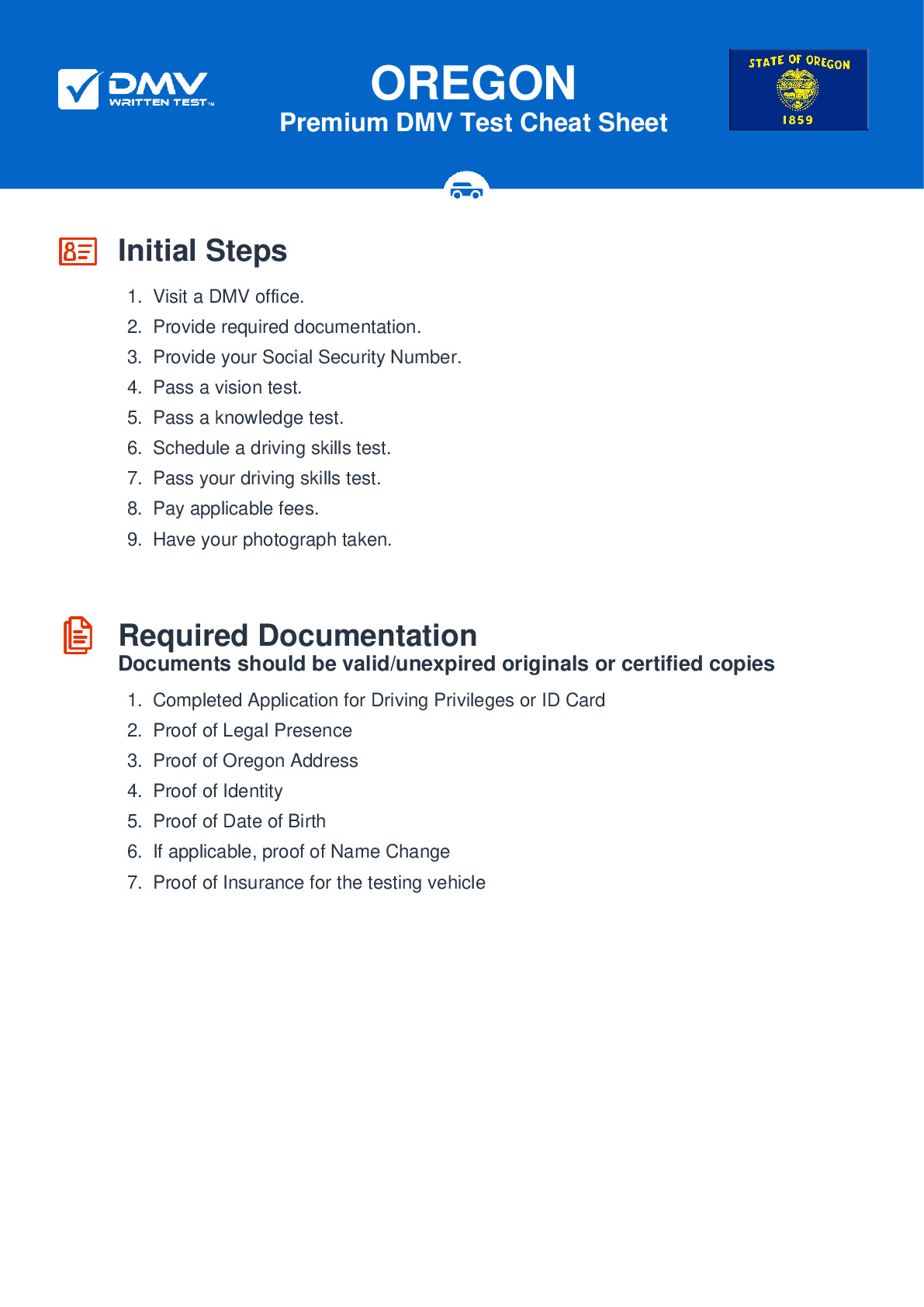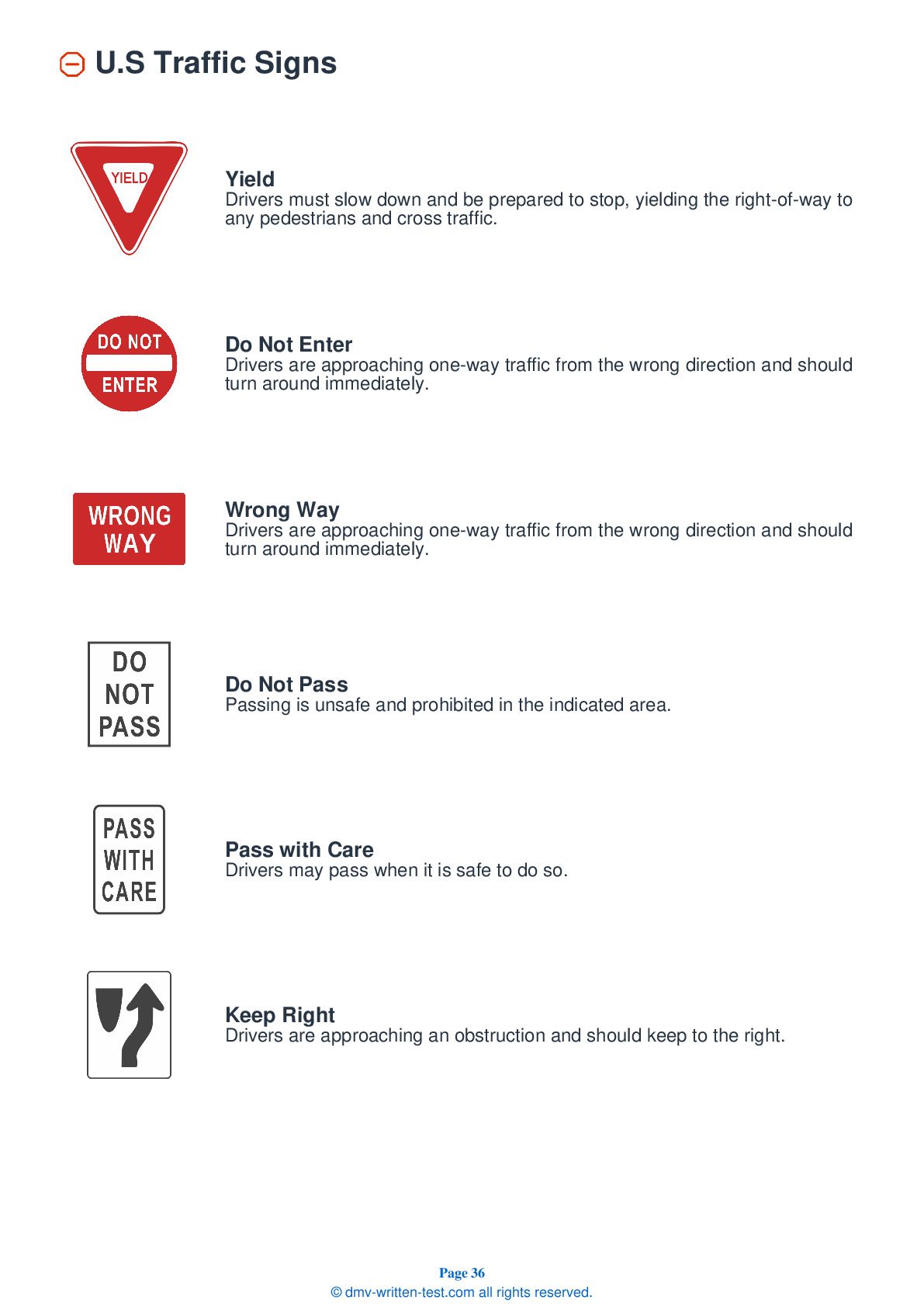2025 Oregon Permit Test 7
The following questions are from real DMV written tests. These are some of the actual permit questions you will face in Oregon. Each permit practice test question has three answer choices. Select one answer for each question and select "grade this section." You can find this button at the bottom of the drivers license quiz. For a complete list of questions and answers for Oregon please visit https://cheat-sheets.dmv-written-test.com/en/oregon/car.
Number of Tests
Number of Question
Passing Score
1. When the road is marked with a solid yellow line and a broken yellow line, with the broken line next to your lane, you may pass:
Explanation
When there is a solid yellow line and a broken yellow line in the center of the road and the broken line is next to your lane, you may cross the lines to pass if there is no oncoming traffic.
2. What may help drivers conserve gasoline?
Explanation
Every time you have to stop quickly, it takes time and fuel to accelerate and get your vehicle back up to the speed of traffic. Drivers who look far ahead of their vehicles can slow down gradually or change lanes to avoid unnecessary braking, leading to better gas mileage.
3. You are driving when it begins to rain. You should:
Explanation
When heavy rain reduces visibility, reduce your speed. Turn on your headlights so other drivers can see your vehicle. If the rain is so heavy that you are unable to see clearly, drive onto the shoulder and stop until the rain lets up.
4. Is it legal cross a double solid yellow centerline to pass?
Explanation
Two solid yellow lines down the center of a two-way road mean that neither lane of traffic may cross the lines, unless they are turning off of the roadway. A driver can cross double yellow lines when turning into or out of a driveway or entrance to a business. No passing is allowed over a solid yellow line.
5. You may drive across a dashed white line:
Explanation
Traffic lanes moving in the same direction are separated by broken white lines. You may cross over dashed lines to pass, if it is safe to do so.
6. Your blind spot is the area of the road:
Explanation
Blind spots are areas that a driver cannot see without moving their head. They can be located to the sides of and behind a vehicle.
7. You may drive around the gates at a railroad crossing:
Explanation




